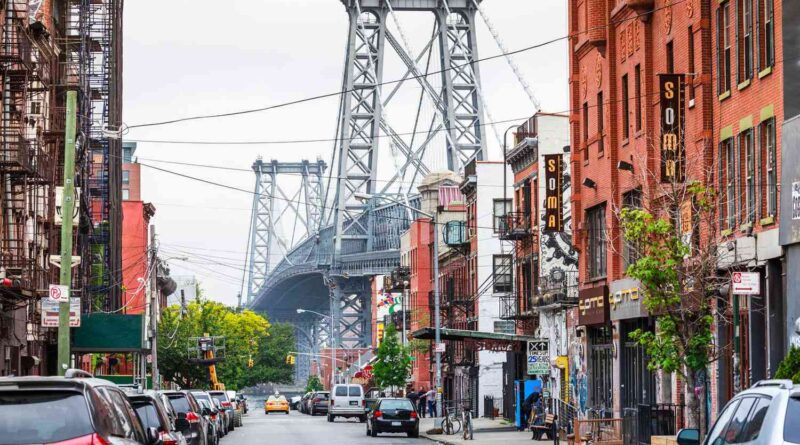History of Brooklyn NY
Brooklyn, one of New York City’s five boroughs, boasts a rich history that reflects the broader American narrative. From its indigenous roots to its rise as a cultural and industrial powerhouse, Brooklyn’s past is as diverse as its present. This article delves into the key historical milestones that shaped this iconic borough.
Indigenous Roots and Early European Exploration
Before the arrival of European settlers, Brooklyn was home to the Lenape people. These Native Americans lived in what they called “Lenapehoking,” which included present-day Brooklyn, Manhattan, and parts of New Jersey. They were skilled hunters, fishers, and farmers who lived in harmony with the land.
European exploration began in the early 1600s, with the arrival of the Dutch. Henry Hudson’s 1609 voyage for the Dutch East India Company led to the eventual settlement of the area. By 1624, the Dutch had established a colony in the New York region, calling it “New Netherland,” with parts of Brooklyn becoming known as “Breuckelen,” named after a town in the Netherlands.
Colonial Brooklyn: Dutch and British Influence
During the 17th century, Brooklyn developed as a patchwork of small farming villages under Dutch rule. The villages of Breuckelen, Midwout (Flatbush), and New Utrecht were established during this period, each with its distinct character. The Dutch influence is still evident in some of Brooklyn’s street names and the area’s early architecture.
In 1664, the English seized control of New Netherland, renaming it New York. Brooklyn, along with the rest of the colony, fell under British rule. The transition was relatively peaceful, and the village of Brooklyn continued to grow, gradually becoming more anglicized. The period leading up to the American Revolution saw Brooklyn as a quiet agricultural region, though its strategic location would soon thrust it into the center of the conflict.
The Battle of Brooklyn: A Pivotal Moment in the American Revolution
The Battle of Brooklyn, also known as the Battle of Long Island, was a significant early battle in the American Revolution. Fought in August 1776, it was the first major battle after the United States declared independence. The British aimed to seize control of New York City and its surroundings, and Brooklyn’s proximity made it a key target.
Despite being outnumbered and outmaneuvered, the Continental Army, led by General George Washington, managed a strategic retreat, avoiding a total defeat. This battle highlighted Brooklyn’s strategic importance and marked one of the war’s most critical moments, demonstrating the resilience of the fledgling nation.
Post-Revolutionary Growth and the Industrial Boom
After the American Revolution, Brooklyn remained a quiet, rural area for several decades. However, the early 19th century brought significant changes. The construction of the Erie Canal in 1825 and the introduction of steam ferries transformed Brooklyn into a bustling port and industrial hub. Factories, shipyards, and warehouses sprang up along the waterfront, attracting workers from across the country and overseas.
Brooklyn’s population surged, and by 1834, it was officially incorporated as a city. The industrial boom led to rapid urbanization, with neighborhoods expanding to accommodate the growing workforce. Brooklyn’s economic significance continued to rise, establishing it as one of the nation’s most important industrial centers by the mid-19th century.
The Civil War Era and Brooklyn’s Contribution
During the Civil War, Brooklyn played a vital role in supporting the Union cause. The borough’s shipyards produced warships and supplies, while its factories manufactured uniforms, weapons, and other essential goods. Brooklyn residents also enlisted in large numbers, with local regiments such as the 14th Brooklyn gaining renown for their bravery.
The war also accelerated Brooklyn’s growth, as the demand for goods and services increased. By the end of the Civil War, Brooklyn was the third-largest city in the United States, a testament to its rapid expansion and industrial prowess.
Consolidation with New York City
One of the most significant events in Brooklyn’s history occurred in 1898, when it was consolidated with New York City. This controversial decision followed years of debate. Many Brooklyn residents opposed the merger, fearing the loss of their city’s unique identity. However, proponents argued that consolidation would bring economic benefits and improve services.
The consolidation transformed Brooklyn from an independent city into one of New York City’s five boroughs. While the decision was contentious, it ultimately paved the way for Brooklyn’s continued growth and integration into the broader metropolis.
The Rise of the Brooklyn Bridge
Completed in 1883, the Brooklyn Bridge is one of the most iconic symbols of the borough. The bridge was a marvel of engineering at the time and connected Brooklyn to Manhattan, fundamentally altering transportation and commerce between the two areas.
Designed by John A. Roebling, the bridge took 14 years to complete and was the longest suspension bridge in the world at its opening. The Brooklyn Bridge not only facilitated easier access between Brooklyn and Manhattan but also symbolized the borough’s ambition and progress.
Immigration and Cultural Diversity
Throughout the late 19th and early 20th centuries, Brooklyn became a melting pot of cultures, with waves of immigrants arriving from Europe, Asia, and the Caribbean. These communities brought their languages, customs, and traditions, shaping the borough’s diverse cultural landscape.
Irish, Italian, Jewish, and later Puerto Rican and Caribbean communities established vibrant neighborhoods, contributing to Brooklyn’s rich tapestry. This diversity is reflected in the borough’s food, festivals, and cultural institutions, many of which continue to thrive today.
Brooklyn During the World Wars
The two World Wars had a profound impact on Brooklyn. During World War I, the Brooklyn Navy Yard became a critical site for shipbuilding, producing vessels for the U.S. Navy. The economic activity generated by the war further fueled the borough’s growth.
World War II brought similar demands, with the Navy Yard again playing a crucial role. Brooklyn also saw an influx of workers from other parts of the country, contributing to its diverse population. After the war, however, the decline of the shipbuilding industry marked the beginning of economic challenges for Brooklyn.
Post-War Decline and Urban Challenges
The post-World War II era saw significant changes in Brooklyn. The decline of manufacturing industries, coupled with suburbanization and white flight, led to economic and social challenges. Many neighborhoods experienced disinvestment, and the borough faced rising crime rates and deteriorating infrastructure.
Despite these challenges, Brooklyn remained home to resilient communities. The 1960s and 1970s were marked by efforts to address urban decay, with community organizations and activists working to improve living conditions and revitalize neighborhoods.
Brooklyn’s Cultural Renaissance
In the late 20th century, Brooklyn began to experience a cultural and economic renaissance. Artists, musicians, and young professionals were drawn to the borough by its affordable housing and vibrant community life. Neighborhoods like Williamsburg and DUMBO became centers of art and culture, attracting creative individuals and new businesses.
This renaissance brought renewed attention to Brooklyn’s historical and cultural assets, from its historic brownstones to its thriving arts scene. The borough’s identity as a hub of creativity and innovation was solidified during this period.
Gentrification and Its Impact
As Brooklyn’s popularity grew, so did concerns about gentrification. The influx of new residents and rising property values led to the displacement of long-time residents in some neighborhoods. This shift sparked debates about the borough’s changing character and the impact on its diverse communities.
While gentrification has brought economic revitalization to many areas, it has also raised important questions about affordability and inclusivity. Brooklyn’s ongoing evolution reflects the broader challenges facing urban areas worldwide.
Modern Brooklyn: A Global Icon
Today, Brooklyn is a global icon, known for its cultural diversity, historic neighborhoods, and dynamic arts scene. The borough continues to evolve, balancing its rich history with modern developments. From the Brooklyn Academy of Music to the Barclays Center, Brooklyn remains a vibrant center of culture and commerce.
The borough’s identity as a place of innovation and creativity endures, drawing visitors and new residents from around the world. Brooklyn’s history is a testament to its resilience and ability to adapt to changing times while preserving its unique character.
Conclusion
Brooklyn’s history is a microcosm of the broader American experience, marked by growth, change, and resilience. From its indigenous roots and colonial past to its rise as an industrial powerhouse and cultural hub, Brooklyn’s story is one of constant evolution. As the borough continues to thrive in the 21st century, its legacy remains deeply intertwined with the fabric of New York City and the nation as a whole.
Discover more from City Towner
Subscribe to get the latest posts sent to your email.




